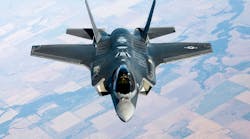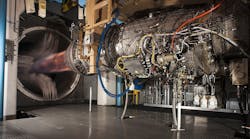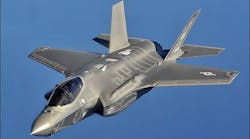Lockheed Martin reported it has fulfilled the 2017 delivery target for the F-35 Lightning II Joint Strike Fighter aircraft, having delivered the 66th jet for this year on Friday, December 15, meeting the goal set jointly by the U.S. Defense Department and the F-35 program’s industrial suppliers.
The F-35 is a single-engine, Stealth-enabled aircraft designed for deployment for ground attack and combat, available in three variants: F-35A, for conventional takeoff and landing (CTOL); F-35B, for short take-off and vertical-landing (STOVL); and the F-35C carrier-based variant for Catapult Assisted Take-Off But Arrested Recovery (CATOBAR) variant.
Over 265 F-35 aircraft have been delivered to U.S. Air Force, Marine Corps, and Navy, and to foreign defense forces that are partners in the program.
The delivery of 66 F-35 jets in 2017 represents an increase of more than 40% from 2016, and the program’s suppliers are working to increase the annual production volume toward a full rate of approximately 160 aircraft in 2023.
Lockheed is the primary contractor for the F-35 program, leading a consortium of more than 1,300 suppliers that includes BAE Systems, Northrup Grumman, and Pratt & Whitney.
While the cost of the F-35 program has been a matter of growing concern for several years, Lockheed and other major contractors committed to implement cost-cutting strategies and to meet new expense limits as early as 2014. When the Trump Administration assumed office earlier this year the concern, as unit costs for the aircraft continue to exceed the $80-million level that Lockheed set as a goal to achieve by 2020.
In its report of the 2017 program results, Lockheed stated it has already reduced the cost of the F-35A by over 60% since the first contract; reduced “touch labor” by about 75% over the past five years, and reduced production time by about 20% since 2015.
Lockheed aims to reduce the unit cost toward the $80-million level as production rates continue to increase and more program improvements are implemented. The OEM listed “lessons learned, process efficiencies, production automation, facility and tooling upgrades, supply chain initiatives and more” as evidence of its progress toward the goal.
"Meeting our 2017 delivery commitment is a testament to the hard work and dedication of our joint government and industry team to deliver the transformational F-35 air system to the warfighter," stated Lockheed martin executive vice president and F-35 program general manager Jeff Babione. "The team continues to overcome program challenges and achieving this milestone gives our customers confidence that the F-35 enterprise can deliver on the increasing production quantities year-over-year."










